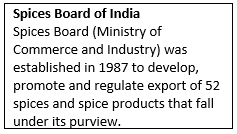Sawalkote Hydropower Project
Context:
Recently, the Ministry of Environment, Forest and Climate Change (MoEFCC) has granted Environmental Clearance for the Sawalkote Hydropower Project in Jammu and Kashmir.
More on the News
- The Sawalkote Hydropower Project is a run-of-the-river scheme that will utilise the waters of the Chenab River flowing through Ramban, Reasi, and Udhampur districts of Jammu and Kashmir.
- The project is to be executed by NHPC Limited, will have a total installed capacity of 1,856 MW and is expected to generate around 8,000 million units of electricity annually.
- This project had earlier received Stage-I forest clearance in July 2025 and has now secured environmental clearance following its evaluation by the Expert Appraisal Committee (EAC) of the MoEFCC.
- The estimated cost of the project has increased from ₹22,000 crore to ₹31,380 crore due to inflation and administrative delays.
Key Features of the Sawalkot Hydropower Project
- The project has a total installed capacity of 1,856 MW, comprising six units of 225 MW and one unit of 56 MW in Stage 1 (1,406 MW) and two units of 225 MW in Stage 2 (450 MW).
- The project will be developed at an estimated cost of ₹31,380 crore, covering a total area of 1,401.35 hectares, which includes 847.17 hectares of forest land and 554.18 hectares of non-forest land.
- This project will involve the construction of a 192.5-metre-high RCC gravity dam, making it one of the largest hydropower projects on the eastern tributaries of the Indus basin.
- The project is expected to generate 8,000 million units of electricity annually, strengthening the region’s power supply and national energy security.
- The Expert Appraisal Committee (EAC) of the MoEFCC has cleared the project, recommending an independent environmental impact assessment five years after commissioning.
- The project does not affect any notified protected areas, and its public hearing was conducted by the Jammu and Kashmir State Pollution Control Board in 2016.
Mission Drishti
Context:
GalaxEye (Bengaluru-based startup) is set to launch the world’s first multi-sensor Earth observation satellite equipped with advanced imaging capabilities.
More on the News
- This Mission Drishti will be launched in the first quarter of 2026, marking the beginning of GalaxEye’s satellite constellation programme aimed at achieving near real-time Earth observation capability by 2029.
- This mission will enable governments, defence agencies, and industries to conduct advanced geospatial analysis for applications such as border surveillance, disaster management, agriculture monitoring, infrastructure assessment, and defence operations.
- This company plans to launch between eight and twelve satellites over the next four years, creating a constellation capable of all-weather and day-and-night Earth observation.
- This mission positions India prominently on the global space innovation map by providing indigenous, high-frequency, and high-precision Earth observation data for commercial, strategic, and environmental applications.
Features of the Drishti Mission
- This Mission Drishti is the world’s first to carry both Synthetic Aperture Radar (SAR) and Multispectral Imaging (MSI) sensors on a single platform.
- Synthetic Aperture Radar (SAR) is a remote sensing technique that uses radar pulses to create high-resolution images of the Earth’s surface, regardless of weather or time of day.
- Multispectral Imaging (MSI) is a technique that captures and analyzes images across multiple, specific wavelength ranges of the electromagnetic spectrum.
- This satellite is equipped with GalaxEye’s proprietary SyncFused Opto-SAR technology, which fuses radar and optical imagery to deliver comprehensive and cloud-independent Earth observation data.
- This satellite weighs 160 kilograms, making it India’s largest privately built and highest-resolution satellite.
- This mission delivers fused, analysis-ready imagery at 1.5-metre resolution and is designed for speed, reliability, and AI-readiness, offering critical decision support in sectors like defence, disaster management, and agriculture.
International Blue Flag Certification
Context:
Recently, five beaches in Maharashtra have received the international Blue Flag certification for meeting global standards of cleanliness, safety, and environmental sustainability.
More on the News
- The beaches that received the certification include Shrivardhan and Nagaon beaches in Raigad district, Parnaka beach in Palghar district, and Guhagar and Ladghar beaches in Ratnagiri district.
- This recognition places Maharashtra among states promoting eco-friendly coastal management and sustainable tourism.
- The certification was granted by Denmark’s Foundation for Environmental Education (FEE), which oversees the global Blue Flag programme.
- India now has a total of 18 Blue Flag Certified beaches.
Blue Flag Certification
- The Blue Flag Programme started in France in 1985.
- It is run by the Foundation for Environmental Education and is headquartered in Copenhagen, Denmark.
- It is awarded to beaches that meet 33 criteria in environmental, educational, safety, and accessibility aspects.
- The four key categories for certification are:
- Water quality
- Environmental management
- Environmental Education
- Safety
- Foundation for Environment Education (FEE) accords the globally recognized eco-label – Blue Flag certification.
- FEE ensures that the high standards of the Blue Flag certification are consistently maintained worldwide.
- To qualify for this prestigious award, a series of stringent environmental, educational, safety-related, and access-related criteria must be met and maintained.
- The mission of Blue Flag is to promote sustainability in the tourism sector, through environmental education, environmental protection and other sustainable development practices.
8th Session of the Codex Committee on Spices and Culinary Herbs
Context:
India hosted the 8th session of the Codex Committee on Spices and Culinary Herbs (CCSCH) in Guwahati, Assam, to strengthen global standards for spice quality, safety, and fair trade.
More on the News

- The Guwahati session aims to reaffirm India’s leadership in setting global spice benchmarks, promoting fair trade, and ensuring sustainable development in the spice industry.
- This session is being hosted by the Government of India, with the Spices Board of India serving as the Secretariat under the Codex Alimentarius Commission (CAC), which operates jointly under the FAO and WHO to promote safe and fair food trade practices.
- The Governor emphasised that the CCSCH plays a pivotal role in preserving and promoting India’s diverse spice biodiversity through science-based and globally harmonised standards.
Codex Committee on Spices and Culinary Herbs (CCSCH)
- The Committee was established as one of the Commodity Committees under the Codex Alimentarius Commission (CAC) in 2013.
- India has hosted this prestigious Committee since the beginning, and Spices Board India serves as the Secretariat organisation, which organises the Committee’s sessions.
- The Codex Committee on Spices and Culinary Herbs (CCSCH) is chaired by India, and functions under the Codex Alimentarius Commission.
- The secretariat for CCSCH is in Kochi, Kerala.
- Since its inception, the CCSCH has developed 14 international standards for 16 spices, strengthening India’s leadership in global spice standardisation.
- The World Trade Organisation (WTO) recognises the Codex Alimentarius Commission as the international reference point for food safety and consumer protection.
India–South Korea Launch First-Ever Bilateral Naval Exercise
Context:
Recently, South Korea hosted the first-ever India–Republic of Korea Navy (IN–RoKN) bilateral naval exercise at Busan, marking a new phase in maritime cooperation.
More on the News
- The inaugural India–Republic of Korea Navy (IN–RoKN) Bilateral Exercise began on October 13, 2025, at Busan Naval Base, South Korea.
- INS Sahyadri, an indigenously built Shivalik-class stealth frigate, represented India in the exercise.
- The Republic of Korea Navy (ROKN) extended a ceremonial welcome to the Indian warship, symbolising deepening navy-to-navy relations.
- The event marks the institutionalisation of regular bilateral engagements between the two nations’ navies under India’s Act East Policy and Indo-Pacific Oceans Initiative (IPOI).
- The exercise includes two phases – a harbour phase and a sea phase – aimed at improving operational synergy and mutual understanding.
Harbour Phase
- The harbour phase involves cross-deck visits by naval personnel to exchange operational knowledge and best practices.
- Officers from both sides will participate in tabletop discussions focusing on maritime strategy, anti-piracy measures, and humanitarian assistance.
Sea Phase
- The sea phase will involve joint naval manoeuvres between INS Sahyadri and ROKS Gyeongnam, a Daegu-class frigate of the ROK Navy.
- Both ships will conduct maritime interdiction operations (MIOs) and anti-submarine warfare (ASW) drills to improve tactical coordination.
Significance of the exercise
- This exercise reflects the shared vision of India and South Korea for a free, open, inclusive, and rules-based Indo-Pacific.
- It underscores India’s growing maritime outreach and its role as a Preferred Security Partner in the region.
Government Declares Limestone a Major Mineral
Context:
Recently, the Ministry of Mines issued a gazette notification to classify all forms of limestone as a major mineral.
More on the News
- The Ministry issued an order, under Section 20A of the Mines and Minerals (Development and Regulation) Act 1957 to enable a smooth transition of leases.
- The order ensures that existing minor mineral limestone leases will continue to operate as major mineral leases without disruption.
- The decision ends the previous dual categorisation that treated limestone as a minor mineral when used in lime kilns for building materials and as a major mineral when used in cement, steel, or chemical industries.
- The reform allows leaseholders to sell or utilise limestone for any industrial purpose without restrictions based on end use.
- The move is aimed at simplifying regulations, improving business conditions, and expanding rural employment through increased mining and industrial activity.
- The decision was taken following recommendations of an Inter-Ministerial Committee chaired by a Member of NITI Aayog, after consultations with multiple stakeholders.
Regulatory Transition Measures
- The existing leaseholders are required to register with the Indian Bureau of Mines (IBM) by March 31, 2026, while continuing to pay royalty at existing state government rates till that date.
- The existing mining plans approved by state governments will remain valid until March 31, 2027, and lessees must obtain IBM approval for mining plans within this period.
- The order grants a temporary exemption from submitting digital aerial imagery of lease areas till July 1, 2027 and from penalties for non-filing of monthly and annual returns to IBM till March 31, 2026.
- However, lessees must continue submitting returns to their respective state governments as per existing provisions.
Economic Impact of the Classification
- Ease of doing business (eoDB) – The leaseholders will be able to sell or utilise limestone for any purpose without any end-use restrictions based on artificial regulatory distinction of minor or major mineral.
- Economic Opportunities – The reform will increase income opportunities in rural areas, as miners and workers benefit from higher demand and wider market access.
- Boost Construction Based Industries – The availability of limestone to the cement industry will rise, enabling rapid expansion of cement manufacturing capacity in the country.
International Day for Disaster Risk Reduction 2025
Context:
The world observes the International Day for Disaster Risk Reduction annually on October 13th to promote preventive and community-led climate resilience.
More on the News
- The theme for 2025, “Fund Resilience, Not Disasters”, emphasises increasing funding for disaster risk reduction (DRR) and ensuring that all development and private investments are risk-informed and resilient.
- The 2025 observance highlights the urgent need to shift global spending priorities from post-disaster response to preventive measures, local resilience, and sustainable infrastructure.
- This year’s campaign urges governments to increase funding for DRR in both public and international budgets.
- The Day was first designated in 1989 by the United Nations General Assembly (UNGA) to encourage every citizen and government to contribute to disaster preparedness and prevention.
Global Concerns
- The Global Assessment Report on Disaster Risk Reduction 2025 estimated direct global losses at $202 billion annually, with the real cost nearing $2.3 trillion.
- Less than 1% of public budgets worldwide are dedicated to DRR, and only 2% of Official Development Assistance (ODA) projects included DRR goals between 2019 and 2023.
India’s Experience in 2025
- India recorded 3,502 disaster-related deaths and 235 extreme weather days in just eight months of 2025, showing a sharp rise since 2022.
- These disasters were driven by climate change, erratic rainfall patterns, mismanaged dams, and unplanned urban and coastal development.
- Lightning strikes have increased by 400 per cent in six years, killing over 1,600 people between April and July 2025.
World Statistics Day 2025
Context:
The world is celebrating the fourth World Statistics Day on October 20 to promote reliable data for sustainable development.
More on the News
- The theme for 2025, “Quality Statistics and Data for Everyone”, focuses on the need for reliable and accessible data to inform decision-making at every level of society.
- The 2025 observance coincides with the 80th anniversary of the United Nations, marking the vital role that trustworthy and inclusive data systems play in advancing global progress.
- The day celebrates the achievements of the global statistical community, which promotes cooperation, develops standards, and ensures the availability of accurate, timely, and ethical data.
- The observance reaffirms that statistics are essential for addressing complex challenges such as climate change, peacekeeping, sustainable development, and public health.
- The United Nations Statistical Commission decided in 2010 to observe October 20 as World Statistics Day every five years to highlight the importance of data in governance and development.
- National Statistics Day is celebrated on June 29 every year to acknowledge and appreciate the exceptional contributions made by statisticians in India, particularly honouring the birth anniversary of eminent statistician (Late) Prof. Prasanta Chandra Mahalanobis.

